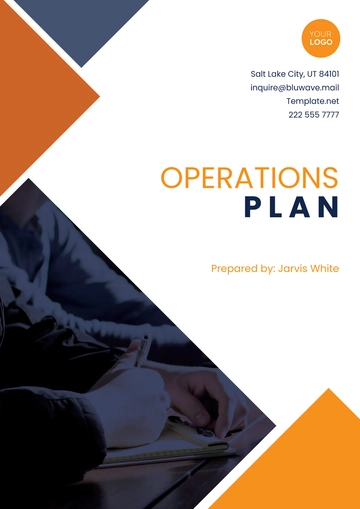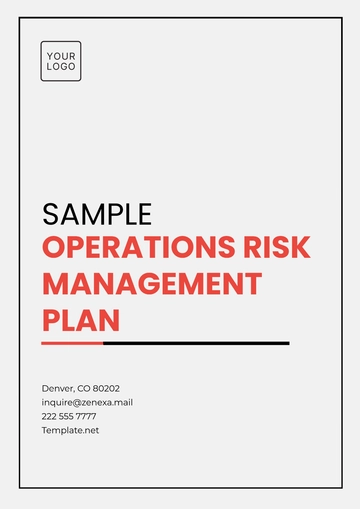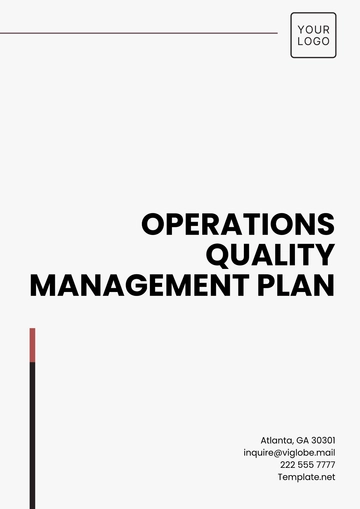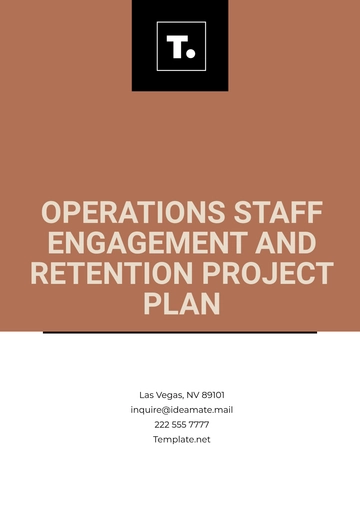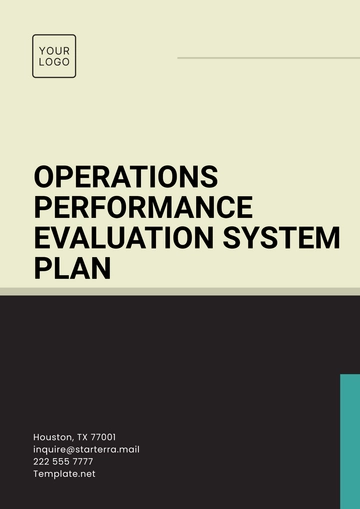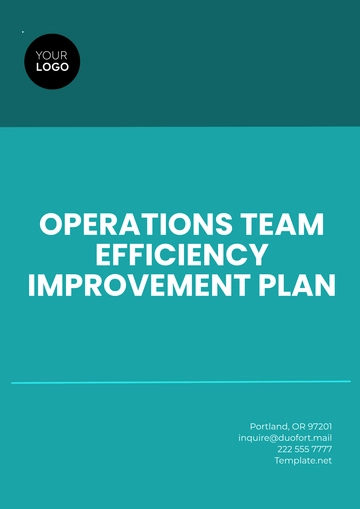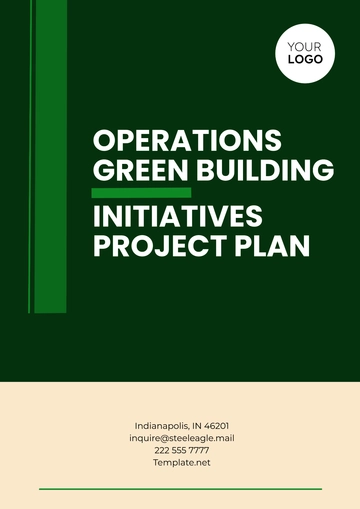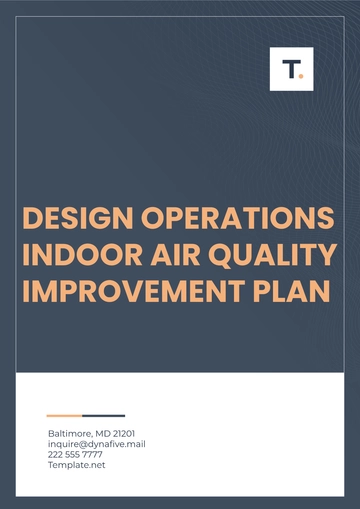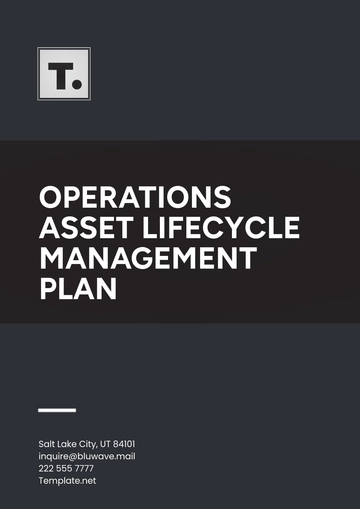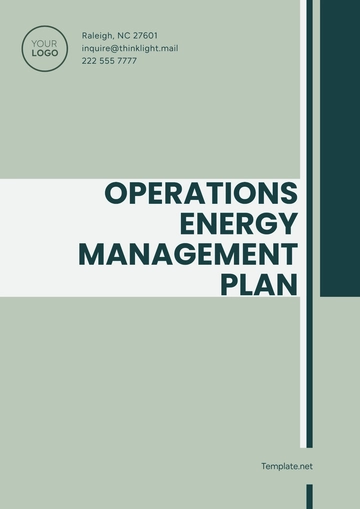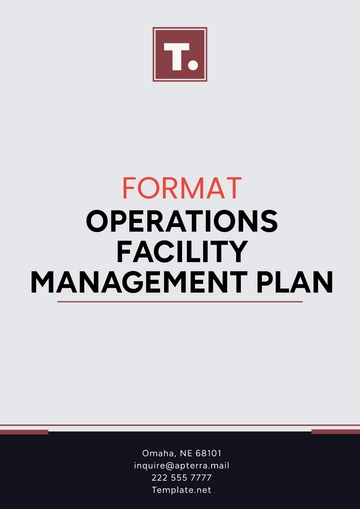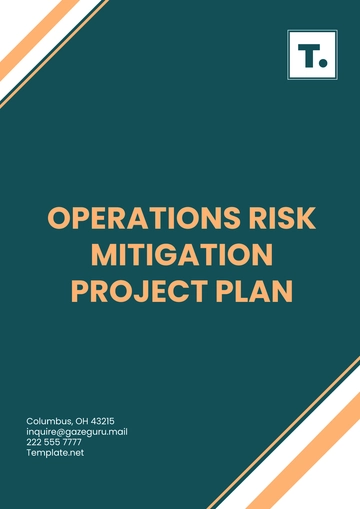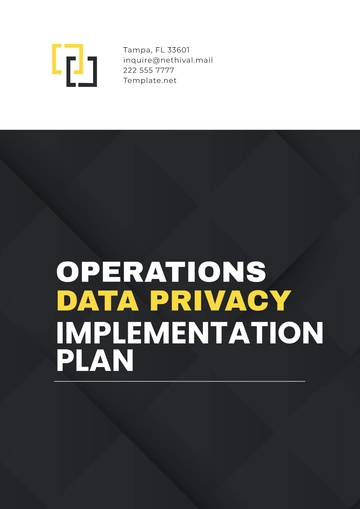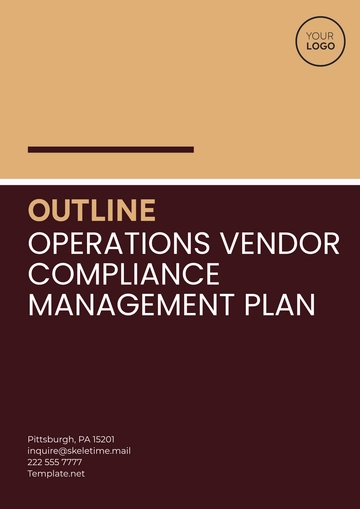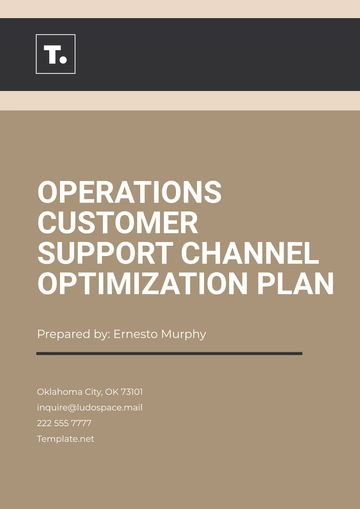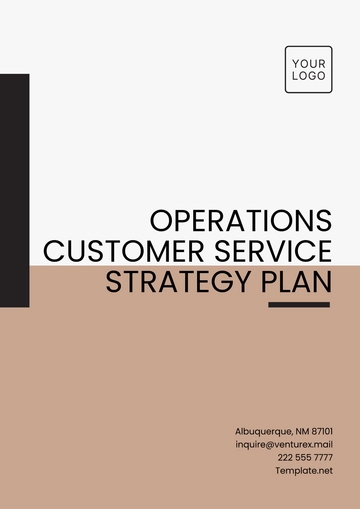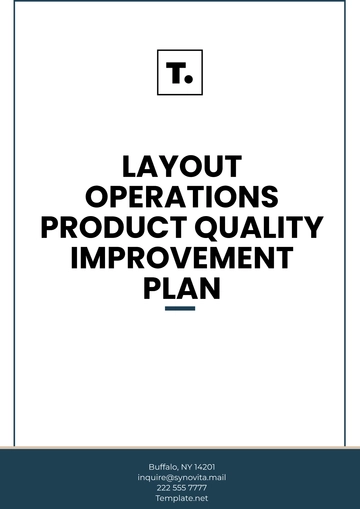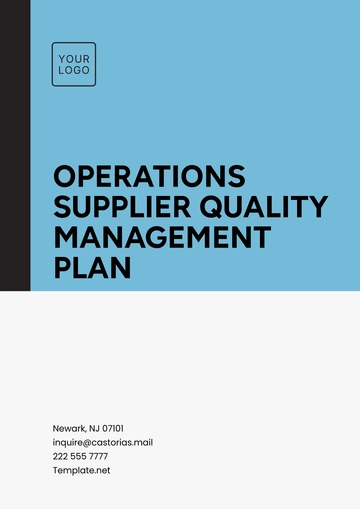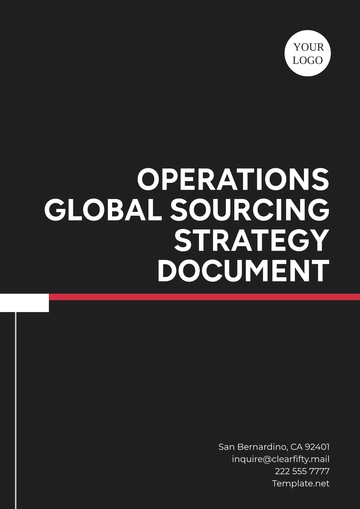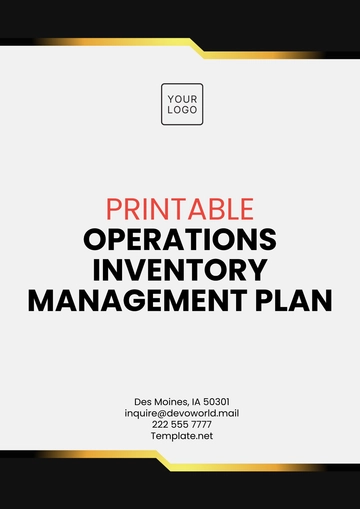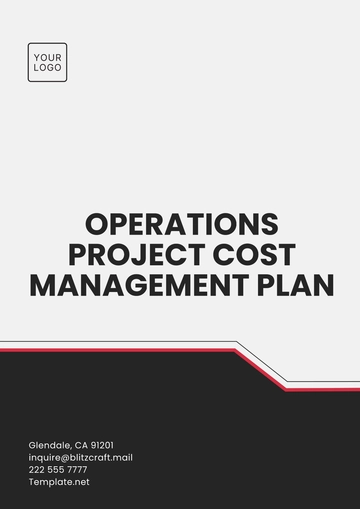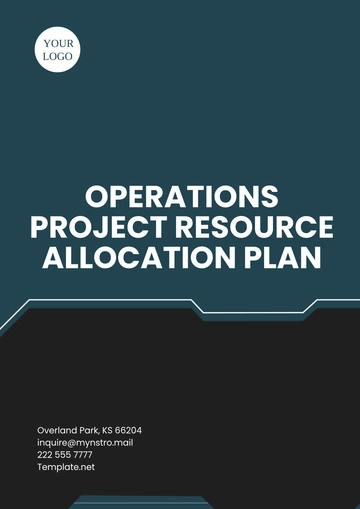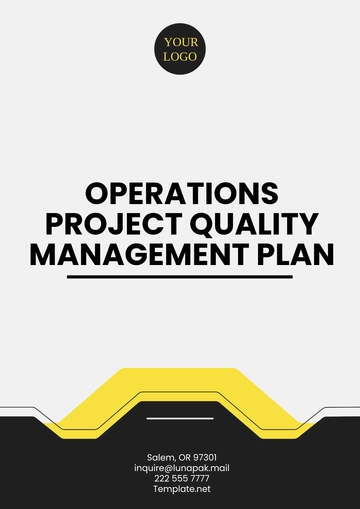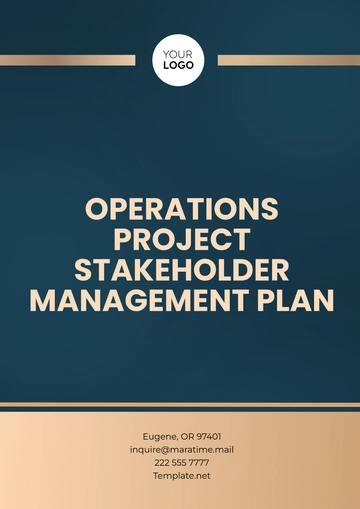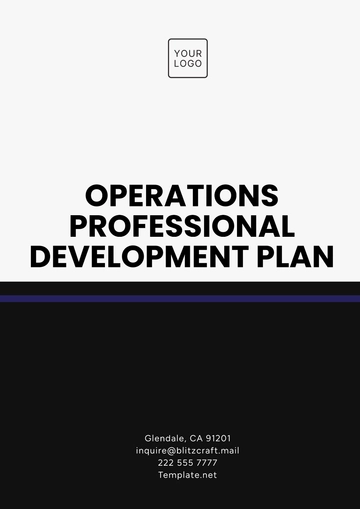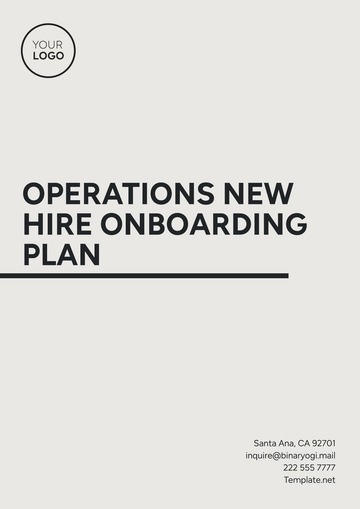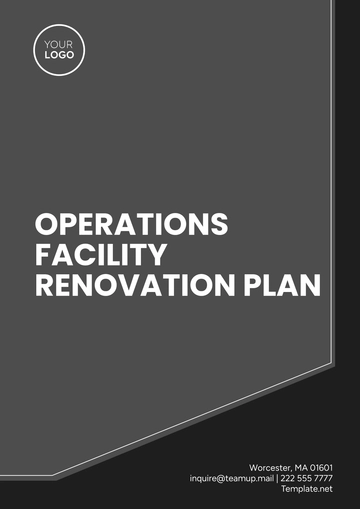Free Community Center Management Plan
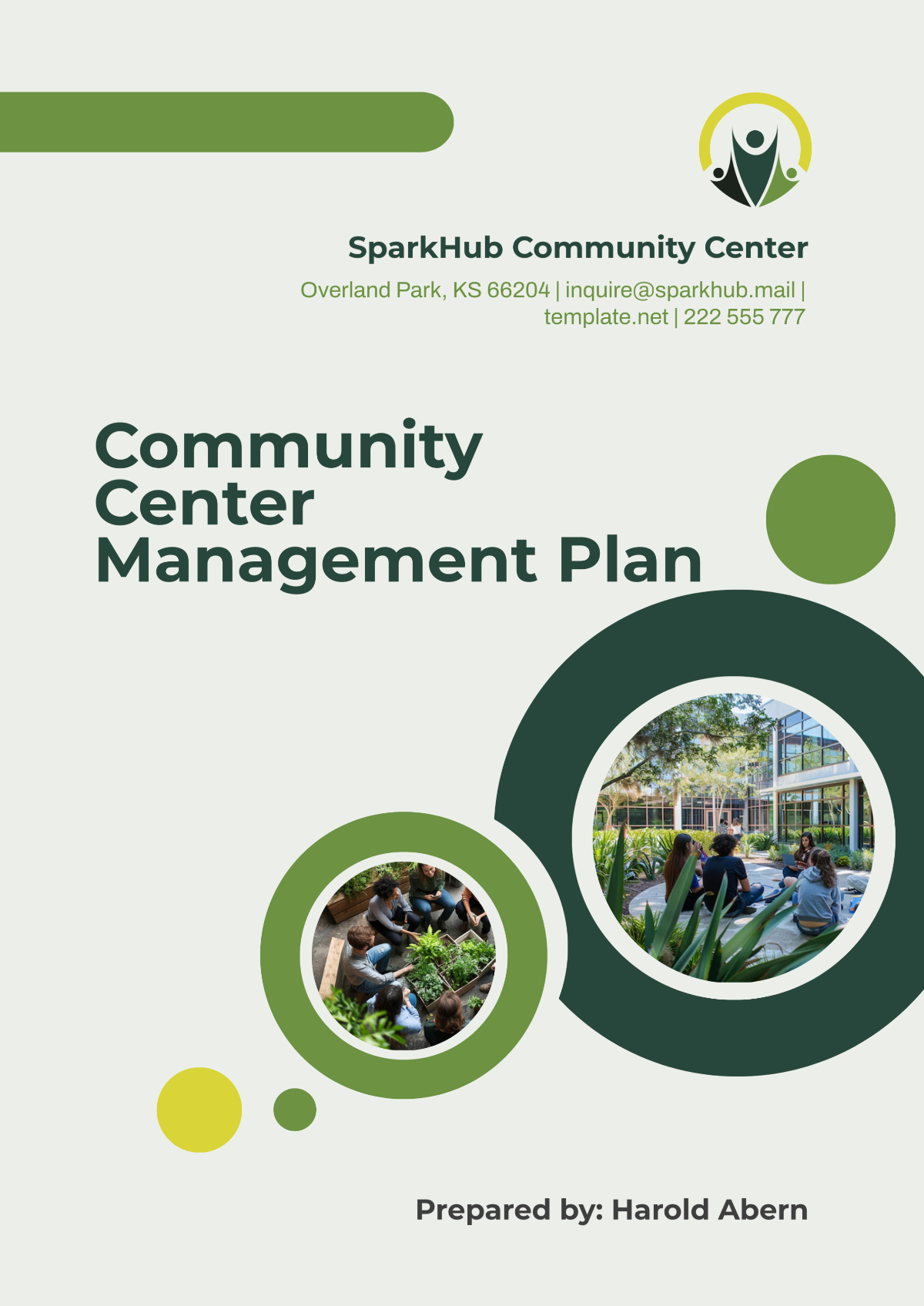
1. Executive Summary
This Community Center Management Plan outlines a strategic approach to managing, operating, and expanding [Your Company Name] Community Center. Community centers have evolved into multi-functional spaces essential for the well-being and development of diverse populations. As a gathering place for individuals from all walks of life, our center offers programs and services that promote wellness, lifelong learning, cultural enrichment, and social connection.
The plan defines clear objectives, a robust management structure, financial strategies, operational standards, and community engagement tactics that align with the needs of our community. As we strive to be a sustainable, inclusive, and accessible center, our plan includes initiatives that reduce environmental impact, improve financial efficiency, and ensure continuous program improvement. We are committed to creating an environment where every community member feels welcome and valued, supported by a team of dedicated staff and volunteers who work tirelessly to bring our mission to life.
2. Mission, Vision, and Core Values
2.1 Mission
Our mission is to build and sustain a vibrant community hub that supports personal growth, cultural expression, wellness, and social connections. [Your Company Name] Community Center is dedicated to creating a welcoming and supportive environment where people of all ages, backgrounds, and abilities can come together. By offering diverse programming, flexible resources, and accessible spaces, we aim to inspire positive change and strengthen the bonds that tie our community together.
2.2 Vision
Our vision for 2050 is to be a model of a progressive, inclusive, and dynamic community center that adapts to the evolving needs of the population we serve. We aim to set new standards in community engagement and innovative programming while remaining grounded in the values of inclusivity and accessibility. As the community grows and changes, we envision the center as a place that continually evolves to provide meaningful services that promote overall well-being, lifelong learning, and community spirit.
2.3 Core Values
Our core values reflect our commitment to the community and guide our decisions, actions, and interactions every day.
Inclusivity: We welcome all individuals, creating an environment where diversity is celebrated, and everyone feels a sense of belonging.
Sustainability: We are dedicated to minimizing our environmental impact through responsible use of resources and sustainable practices.
Innovation: We seek creative solutions to meet community needs and continuously improve our offerings.
Community: We prioritize connection, encouraging meaningful relationships and fostering a sense of togetherness.
Integrity: We uphold transparency, honesty, and accountability in all aspects of our operations.
3. Management Structure
3.1 Governance Model
The center operates under the oversight of a Board of Directors, which includes a diverse group of local stakeholders, community leaders, and elected representatives. The board’s primary role is to provide strategic direction, approve budgets, and oversee the center’s overall performance. Each member brings unique skills and perspectives to the board, which enhances the center's ability to respond to community needs. To stay connected with the community’s pulse, the board holds quarterly meetings where they review progress, address challenges, and make decisions on major initiatives that shape the center’s future.
3.2 Operational Team
The Executive Director leads the operational team and has the responsibility of ensuring that all aspects of daily operations align with the center's mission and goals. Supporting the Executive Director are department heads who manage various aspects of the center, including Programs, Facilities, Finance, Community Engagement, and Marketing. This structure allows for specialized focus in each department while fostering collaboration across teams to ensure consistency and efficiency in meeting the community’s needs.
3.3 Staff and Volunteers
Our center employs a combination of full-time staff, part-time employees, and a network of dedicated volunteers. Full-time staff are responsible for essential operations, program development, and administrative support, while part-time staff contribute during peak hours and special events. Volunteers are integral to the center’s success, as they assist with events, lead activities, and help with community outreach. We prioritize creating a rewarding environment for our volunteers, as their contributions are invaluable to fostering a strong, engaged community.
3.4 Decision-Making Process
Our center's decision-making process emphasizes inclusivity, collaboration, and data-driven strategies. Strategic decisions, such as the introduction of new programs or significant budget allocations, are approved by the Board of Directors. Operational decisions, including day-to-day management and program scheduling, are managed by the Executive Director and department heads. Regular team meetings across all levels encourage open communication, collaboration, and alignment with the center's mission, ensuring that decisions reflect the community’s best interests.
4. Financial Planning and Budget
4.1 Budget Overview
Sound financial management is essential to our center’s sustainability and growth. Our 2050 annual budget is projected at $[1,500,000], covering personnel expenses, facility maintenance, program supplies, marketing, and other operational costs. Allocating resources carefully allows us to maintain high-quality services while ensuring that we remain financially viable. The table below provides a breakdown of our budget categories and respective annual allocations:
Budget Category | Annual Allocation ($) |
|---|---|
Personnel | 600,000 |
Facility Maintenance | 300,000 |
Program Supplies | 250,000 |
Marketing | 150,000 |
Miscellaneous | 200,000 |
4.2 Revenue Sources
Our center is funded through a combination of program fees, memberships, grants, donations, and facility rentals. By diversifying our revenue sources, we reduce reliance on any single funding stream, making us more resilient to economic fluctuations. Projected revenue for 2050 is approximately $[1,600,000], which includes a contingency fund to cover unforeseen expenses. We continually seek to build partnerships with local businesses, foundations, and government entities to expand our funding options, ensuring that we can meet evolving community needs.
4.3 Financial Management Practices
We follow stringent financial management practices to safeguard our resources and ensure responsible spending. A Finance Committee, comprised of board members and financial experts, closely monitors our expenditures, evaluates funding needs, and oversees budgeting. To promote accountability, we conduct routine financial audits and share budget reports with stakeholders. By adhering to these practices, we are able to sustain our mission and remain financially stable in both prosperous and challenging times.
5. Facility Operations
5.1 Facility Layout and Capacity
The center is spread across [30,000] square feet and designed to accommodate a maximum of [500] visitors daily. This space includes multi-purpose rooms, fitness areas, a community kitchen, and designated rooms for children, teens, and seniors. Our facility layout prioritizes accessibility and safety, while also allowing for flexibility in use. Each area is equipped with modern amenities, comfortable seating, and adequate lighting to create an inviting atmosphere. We have strategically placed common areas to encourage social interaction and community engagement among visitors.
5.2 Safety and Maintenance
Safety is a top priority at our center, and we adhere to rigorous safety standards to protect our visitors, staff, and volunteers. We conduct regular fire drills, maintain first aid stations, and ensure that exits are clearly marked and accessible. Our maintenance schedule includes daily cleaning, monthly equipment checks, and semi-annual facility inspections to keep all areas in optimal condition. Additionally, we have a long-term plan for major renovations every [5] years to modernize our facilities and maintain high-quality standards.
5.3 Accessibility
To ensure that our community center is accessible to all, we have incorporated various design features such as wheelchair ramps, elevators, accessible restrooms, and reserved parking spaces. Our staff receive specialized training on accommodating individuals with disabilities, allowing us to provide a welcoming and inclusive environment. By consistently evaluating our facilities for compliance with accessibility standards, we work to eliminate any barriers that may hinder participation, ensuring that everyone feels comfortable and included.
6. Programming and Services
6.1 Program Categories
Our center provides a diverse range of programs tailored to meet the needs and interests of various demographics in the community.
Youth Programs: We offer activities and clubs that support children’s physical health, creativity, and educational development. These programs foster friendships, teach essential life skills, and encourage a love for learning through play and exploration.
Adult Education: Our adult education programs focus on skill-building, wellness, and personal growth. Classes and workshops cover a variety of topics, from technology and finance to health and fitness. These offerings provide adults with valuable resources for personal and professional development.
Senior Activities: We believe in supporting active aging by offering programs that promote social engagement, mental stimulation, and physical well-being. Our senior programs include recreational activities, fitness classes, and social events tailored to meet the needs of our older community members.
Cultural Events: Celebrating diversity is central to our mission, and we host cultural events that allow people to share and explore different traditions, customs, and artistic expressions. These events strengthen community bonds and foster mutual respect and understanding among individuals from all backgrounds.
6.2 Schedule and Frequency
Programs are offered on a recurring schedule to accommodate different availability and preferences within the community. Youth programs typically run weekly, while senior activities are held bi-monthly. Adult education classes are scheduled monthly, allowing participants to build on their knowledge over time. We release a quarterly calendar to keep the community informed of upcoming events, and our website provides easy online registration and reminders for participants.
6.3 Community Partnerships
Collaborating with local organizations allows us to offer more comprehensive services. By forming partnerships with schools, health providers, cultural groups, and social services, we enhance our ability to meet community needs and expand the variety of programs we can offer. For example, partnerships with local hospitals have enabled us to provide free health screenings, while collaborations with schools support our after-school tutoring initiatives.
7. Community Engagement and Outreach
7.1 Community Feedback Mechanisms
We actively engage with our community to ensure that our programs and services meet their needs. We use a combination of feedback channels, such as in-person surveys, digital feedback forms on our website, and suggestion boxes within the facility. We also conduct annual community satisfaction surveys to gather detailed insights into the community’s preferences, needs, and experiences at the center. In addition, our staff members frequently interact with visitors to receive informal feedback, which helps us make timely adjustments to our services and facilities.
To ensure continuous community involvement, we hold quarterly “Community Roundtable” sessions, where residents can voice their opinions directly to management. Feedback received is meticulously reviewed, analyzed, and included in our program planning and operational adjustments. Our goal is to be responsive and proactive, creating a center that truly reflects the community’s evolving needs and preferences.
7.2 Social Media and Digital Outreach
In today’s digital age, maintaining an active online presence is essential for connecting with the community. Our social media strategy is designed to keep the community informed, involved, and engaged with the center’s activities. We maintain active profiles on major platforms like Facebook, Instagram, and Twitter, where we share upcoming events, program highlights, and community stories. Additionally, we send out a monthly newsletter via email, summarizing upcoming programs, volunteer opportunities, and important announcements.
Our website serves as a comprehensive resource for all things related to the center, with online registration for programs, a calendar of events, and resources on local community services. We also encourage community members to tag us in their posts and share their experiences, helping build a sense of shared community pride and connection.
7.3 Volunteer Engagement
Volunteers are the backbone of many of our programs and events. We have developed a structured volunteer program that includes recruitment, training, and recognition. New volunteers participate in an orientation session that familiarizes them with the center’s policies, safety protocols, and specific responsibilities within their roles. Volunteers are also given the opportunity to choose the areas that align with their interests, whether it’s assisting with youth programs, helping at cultural events, or supporting day-to-day operations.
We show appreciation for our volunteers through an annual Volunteer Appreciation Gala, awards, and small tokens of gratitude throughout the year. Our center values the contributions of each volunteer, recognizing that their time and commitment are integral to our success and community impact.
8. Risk Management
8.1 Risk Assessment and Mitigation Strategies
Effective risk management is essential for providing a safe environment and ensuring business continuity. Our risk management strategy involves regular risk assessments that identify potential hazards and threats to the community center, both physical and operational. We analyze these risks based on their probability and potential impact, then develop mitigation strategies to address them. Key risks include facility-related hazards, data security risks, and operational risks such as financial instability.
To mitigate these risks, we maintain a detailed risk register that categorizes risks by type, assigns responsibility, and outlines specific actions to minimize impact. For example, physical risks are mitigated through regular facility inspections and maintenance, while financial risks are managed through budget control and diversification of revenue sources. Additionally, we work closely with insurance providers to ensure comprehensive coverage that protects the center, its staff, and visitors.
8.2 Emergency Preparedness
The center has an emergency preparedness plan that outlines protocols for various types of emergencies, including natural disasters, fire, medical emergencies, and security incidents. Our staff undergoes annual training on emergency response, covering topics such as first aid, evacuation procedures, and crisis communication. Evacuation drills are held bi-annually to ensure both staff and visitors are familiar with emergency exits and safety protocols.
We also collaborate with local emergency response agencies to coordinate response efforts and ensure effective communication. Emergency contact lists are updated regularly, and key staff members are equipped with mobile radios for immediate communication during crises. By preparing for a range of possible scenarios, we aim to minimize risk to our community members and ensure their safety in all situations.
9. Sustainability Initiatives
9.1 Environmental Impact Reduction
[Your Company Name] Community Center is committed to reducing our environmental footprint through sustainable practices. We have implemented eco-friendly initiatives such as energy-efficient lighting, water-saving fixtures, and a recycling program. Our energy management system monitors electricity usage, enabling us to identify opportunities for reduction and efficiency improvements. Solar panels are also planned for installation on the roof by [2051], which will contribute significantly to reducing our carbon footprint and reliance on non-renewable energy sources.
Our waste reduction program includes composting organic waste generated in our community kitchen and hosting “Green Workshops” to educate community members on sustainable living practices. We also encourage the community to bring reusable containers and water bottles, reducing single-use plastics at our facility. By continuously evaluating our practices, we aim to set a positive example and inspire the community to engage in sustainable habits.
9.2 Social Responsibility Programs
In addition to our environmental efforts, we are dedicated to fostering social responsibility within the community. Our social responsibility programs include community outreach initiatives, partnerships with local non-profits, and support for underprivileged families through scholarship programs for youth activities and educational workshops. By creating opportunities for underserved groups to participate in our programs, we work towards greater equity and inclusivity in the community.
To maximize our impact, we collaborate with local charities and service organizations on special projects, such as holiday food drives, clothing donation events, and back-to-school supply drives. These initiatives allow us to extend our support beyond the community center walls and create a positive ripple effect throughout the community.
10. Evaluation and Continuous Improvement
10.1 Performance Metrics
To measure our effectiveness, we have established key performance metrics that evaluate the quality and impact of our programs and services. Metrics include program attendance rates, member retention, satisfaction ratings from surveys, volunteer hours contributed, and facility maintenance outcomes. These metrics provide a comprehensive view of our performance and help us identify areas where we can improve. By setting clear targets for each metric, we are able to track progress and make adjustments as needed to meet community expectations.
10.2 Community Feedback Integration
Community feedback is a cornerstone of our continuous improvement efforts. In addition to post-program surveys and quarterly meetings, we conduct focus groups to gain deeper insights into the experiences and preferences of community members. Feedback is analyzed and shared with all departments, ensuring that every team member understands community perspectives and uses this information to enhance program delivery and customer service.
Our Community Advisory Committee, made up of community representatives, also plays a role in guiding decision-making based on feedback. This approach fosters trust and transparency, allowing us to co-create programs with community members, making them more relevant and impactful.
10.3 Continuous Improvement Plan
Our Continuous Improvement Plan is designed to foster an adaptable and responsive management approach. Each department is tasked with developing improvement initiatives aligned with our mission and objectives. For example, the program department continually assesses community interests and demographics to update our offerings, while the facilities department invests in technology upgrades and sustainable materials to enhance user experience and reduce maintenance costs.
Regular reviews of our initiatives ensure that improvements are implemented effectively, and success stories are celebrated. Staff members are encouraged to bring new ideas forward, creating a culture where innovation and community-driven solutions thrive.
- 100% Customizable, free editor
- Access 1 Million+ Templates, photo’s & graphics
- Download or share as a template
- Click and replace photos, graphics, text, backgrounds
- Resize, crop, AI write & more
- Access advanced editor
Streamline center operations with the Community Center Management Plan Template from Template.net. This editable and customizable template covers key management areas, including staffing, budgeting, and program planning. Modify it in our Ai Editor Tool to enhance the efficiency and impact of your community programs.
You may also like
- Finance Plan
- Construction Plan
- Sales Plan
- Development Plan
- Career Plan
- Budget Plan
- HR Plan
- Education Plan
- Transition Plan
- Work Plan
- Training Plan
- Communication Plan
- Operation Plan
- Health And Safety Plan
- Strategy Plan
- Professional Development Plan
- Advertising Plan
- Risk Management Plan
- Restaurant Plan
- School Plan
- Nursing Home Patient Care Plan
- Nursing Care Plan
- Plan Event
- Startup Plan
- Social Media Plan
- Staffing Plan
- Annual Plan
- Content Plan
- Payment Plan
- Implementation Plan
- Hotel Plan
- Workout Plan
- Accounting Plan
- Campaign Plan
- Essay Plan
- 30 60 90 Day Plan
- Research Plan
- Recruitment Plan
- 90 Day Plan
- Quarterly Plan
- Emergency Plan
- 5 Year Plan
- Gym Plan
- Personal Plan
- IT and Software Plan
- Treatment Plan
- Real Estate Plan
- Law Firm Plan
- Healthcare Plan
- Improvement Plan
- Media Plan
- 5 Year Business Plan
- Learning Plan
- Marketing Campaign Plan
- Travel Agency Plan
- Cleaning Services Plan
- Interior Design Plan
- Performance Plan
- PR Plan
- Birth Plan
- Life Plan
- SEO Plan
- Disaster Recovery Plan
- Continuity Plan
- Launch Plan
- Legal Plan
- Behavior Plan
- Performance Improvement Plan
- Salon Plan
- Security Plan
- Security Management Plan
- Employee Development Plan
- Quality Plan
- Service Improvement Plan
- Growth Plan
- Incident Response Plan
- Basketball Plan
- Emergency Action Plan
- Product Launch Plan
- Spa Plan
- Employee Training Plan
- Data Analysis Plan
- Employee Action Plan
- Territory Plan
- Audit Plan
- Classroom Plan
- Activity Plan
- Parenting Plan
- Care Plan
- Project Execution Plan
- Exercise Plan
- Internship Plan
- Software Development Plan
- Continuous Improvement Plan
- Leave Plan
- 90 Day Sales Plan
- Advertising Agency Plan
- Employee Transition Plan
- Smart Action Plan
- Workplace Safety Plan
- Behavior Change Plan
- Contingency Plan
- Continuity of Operations Plan
- Health Plan
- Quality Control Plan
- Self Plan
- Sports Development Plan
- Change Management Plan
- Ecommerce Plan
- Personal Financial Plan
- Process Improvement Plan
- 30-60-90 Day Sales Plan
- Crisis Management Plan
- Engagement Plan
- Execution Plan
- Pandemic Plan
- Quality Assurance Plan
- Service Continuity Plan
- Agile Project Plan
- Fundraising Plan
- Job Transition Plan
- Asset Maintenance Plan
- Maintenance Plan
- Software Test Plan
- Staff Training and Development Plan
- 3 Year Plan
- Brand Activation Plan
- Release Plan
- Resource Plan
- Risk Mitigation Plan
- Teacher Plan
- 30 60 90 Day Plan for New Manager
- Food Safety Plan
- Food Truck Plan
- Hiring Plan
- Quality Management Plan
- Wellness Plan
- Behavior Intervention Plan
- Bonus Plan
- Investment Plan
- Maternity Leave Plan
- Pandemic Response Plan
- Succession Planning
- Coaching Plan
- Configuration Management Plan
- Remote Work Plan
- Self Care Plan
- Teaching Plan
- 100-Day Plan
- HACCP Plan
- Student Plan
- Sustainability Plan
- 30 60 90 Day Plan for Interview
- Access Plan
- Site Specific Safety Plan
